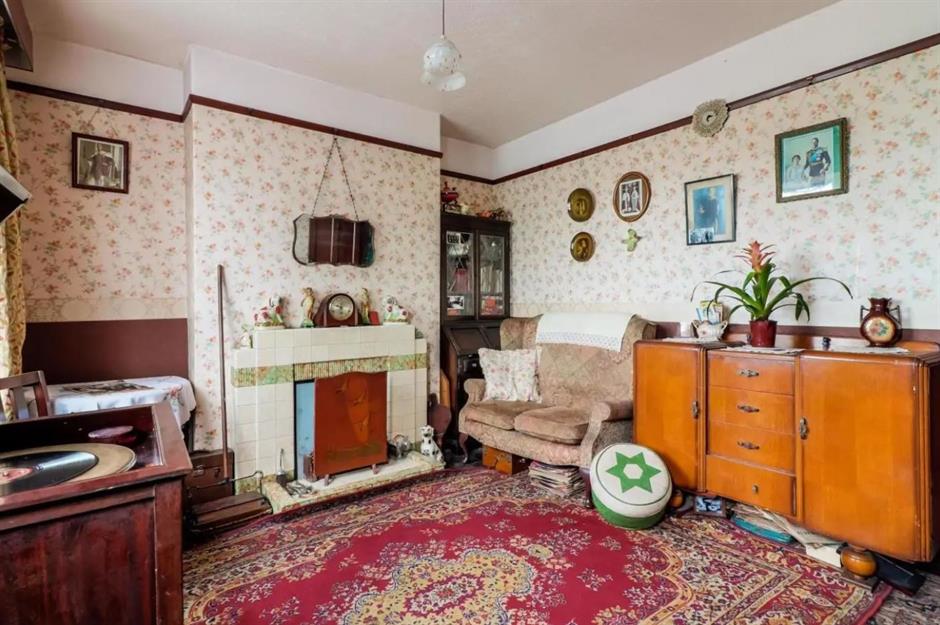Table Of Content

The catalog contains several ideas specific to linoleum patterns — which were super common in 1940s decor. Hazel points out that this flooring can come to the rescue when a room’s furnishings are undistinguished. From the sounds of this catalog, folks were making do with the furniture they had and adding spiff around the edges.
Key Furniture Designers of the Time
I’ve found that the interplay of subtlety and audacity goes a long way in modern homes featuring 1940s elements. For instance, linoleum flooring and vintage wallpaper, characteristic of the 1940s aesthetic, can make a profound impact when integrated into modern design layouts. In drenching all walls in wallpaper not just accent walls you add an unexpected yet genuinely authentic 1940s flair. Sweetly immersed in the past and influencing the future, the furniture and decor of the 1940s was a masterful blend of vision and functionality. It was about crafting pieces that matched the post war ethos and stood the test of time.
Easy Nightstand Decor Ideas and Tips
Aspiring decorators of the era often sought expert guidance or flipped through magazines for inspiration. This section will provide some helpful tips for seamlessly blending 1940s style into your home decor. Not only does it add a touch of luxury, but it also reflects light and creates the illusion of more space in smaller rooms. Here are some must-haves for achieving that classic vintage glamour aesthetic. But maybe it was a sign of the times, and people needed funny, quirky items to make them smile during this recovery period.
Furniture and Decor: Must-Haves for a Vintage Glamour Look
Since steel and other metals were in short supply, wood became the material of choice. "It was an inexpensive material that a DIYer could install," Gatlin says. Dark wood furniture finishes were also popular, partly because that's what was left from the pre-WWII era and partly because people wanted to give their homes a cozy feel after the atrocities of the war. "The soldiers come home and they're ready to buy a house and start a family," Gatlin says. "There's a huge boom in residential building." While factories retooled from war production, a materials shortage meant new houses were built small and at a low cost.
Get Inspired By the 5 Legends of Italian Furniture and Interior Design - GQ
Get Inspired By the 5 Legends of Italian Furniture and Interior Design.
Posted: Mon, 03 Apr 2017 07:00:00 GMT [source]
I’ve found that one of the biggest challenges of these homes is their outdated floor plans, often compartmentalized and quite unlike the open, airy spaces desired in a modern home. Here’s where I bring in an essential remodeling element the open floor plan. Many people are now looking to incorporate this vintage style into their modern homes but may be unsure of where to start. These rich colors added warmth and sophistication to rooms, creating a sense of luxury. Lighter shades like pale pink and mint green were commonly used for a softer touch.
The Color Palette of the 1940s Interior Design
You can complete the look with smaller enameled appliances, as well—like a toaster or electric kettle. For a DIY update to your kitchen appliance package, you can also purchase appliance enamel paint and give your kitchen range a fresh coat of 1930s and 1940s-inspired color. The 1930s or 1940s kitchen wouldn’t be complete without their iconic enameled appliances.
Kitchen furniture in the 1930s and 1940s reflected a simple, practical aesthetic. A table and chair set provided seating for meals, but banquettes were also a popular pick. An upholstered bench, usually built-in to the space with a padded backrest, provided plenty of space for family and friends to gather. The aesthetic of a banquette can be modernized with the style and upholstery choices you make, but the practical design carries an appealing retro flair.

Defining Materials of the 1940s Interior Style
Colors were crucial in creating the distinct look of 1940s interior design. Deep jewel tones such as emerald green, sapphire blue, and ruby red were popular for walls and furnishings. Not limited to interior design, modernism included architecture, industrial, and graphic design. In addition to Charles and Ray Eames, key figures included Arne Jacobson, George Nelson, Eero Saarinen, Florence Knoll, Harry Bertoia, Isamu Noguchi, Hans Wegner, and Mies van der Rohe. Many of these designers fled the Nazis in Europe for a fresh start in the post-WWII United States. Throughout the 1940s, Hollywood pictures offered as much fashion to feast on as a magazine.
Furniture of 1930s and 1940s Kitchens
One example of this ingenuity appeared on Eames chairs, quintessential midcentury modern pieces that got their start in 1956. Made by designers Charles and Ray Eames, the chairs consisted of molded plastic, fiberglass, and plywood. They're such classics that they're still being made to this day by the Herman Miller Company, along with Eames coffee tables, based on a piece they made for their own California home in 1949. A scarcity of traditional fashion fabrics during the war meant designers and at-home sewers needed to get scrappy.
Vases with silk, plastic, or dried plants replaced houseplants, still considered a dated relic of the Carter era. Now teens, the kids born after World War II rebelled against tradition, and America was changing thanks to the women's movement, the civil rights movement, a sexual revolution, and the Beatles. Everything from fashion to home decor became more dynamic, graphic, and colorful.
The platform provided a wealth of home ideas and offered a place to post photos of personal design accomplishments. Tailored, tight-back sofas made a comeback, replacing the slouchy, pillow-backed sofas of the previous era. "You're seeing a new interest in midcentury mod style and cleaner lines," Gatlin says. Stencils, sponge-painting, and faux finishes made interior walls look like leather, stucco, marble, ancient frescoes—anything but drywall.
No comments:
Post a Comment